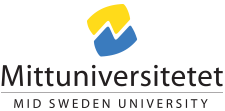Risk and power in the public discourse
Risks of different kinds are high on the agenda in contemporary society. Concerns have been raised, however, that risk has become a tool with which to control society, organizations, and individuals. Drawing on these concerns the purpose of this proposed project is to use a critical discourse analysis to shed light on how risk reporting operates during a disaster, that is, how risk was done and undone in mass media during the widespread wildfire in Västmanland the summer of 2014.
Even though fires occur regularly in Sweden, the scale and intensity of the wildfire that raged through boreal forests in August 2014 was the largest wildfire Sweden has seen in at least four decades. It charred more than 150 square kilometers (60 square miles), killed one person, and forced thousands to evacuate their homes.
We already know that the media are crucial players in the construction of, and communication about, risk but they might have even more influence when the public feel that they are not getting information from responsible organizations, as happened in Sweden during the summer in 2014.
It is obvious that Sweden was not prepared, and by critically analysing the reporting in mass media, we can shed light on the developments of risk discourses, struggles over discursive legitimacy, and shifts in argumentation to legitimate or un-legitimate certain actors and actions in relation to the disaster. Hence, trace relations of power expressed through the language of risk and blame. Using such perspectives, as Wardman writes, opens up for questions of how notions of risk come to ‘delimit what it is possible to think and say at a particular time, what purpose does this serve, and to whose benefit?’ (2008: 1633). The critical perspective is central to ensure that questions of ideology, conflict, and power enter the equation. In this way attention will be brought to bear on questions such as the meanings ascribed to a risk; the forms of understanding used to legitimize risk; and the consequences for different societal actors.
The project will use articles from three different newspapers, one national morning newspaper, Dagens Nyheter, one tabloid, Aftonbladet, and one local newspaper, Sala Allehanda, from the period of the wildfire, 2014-08-01–08-31.
